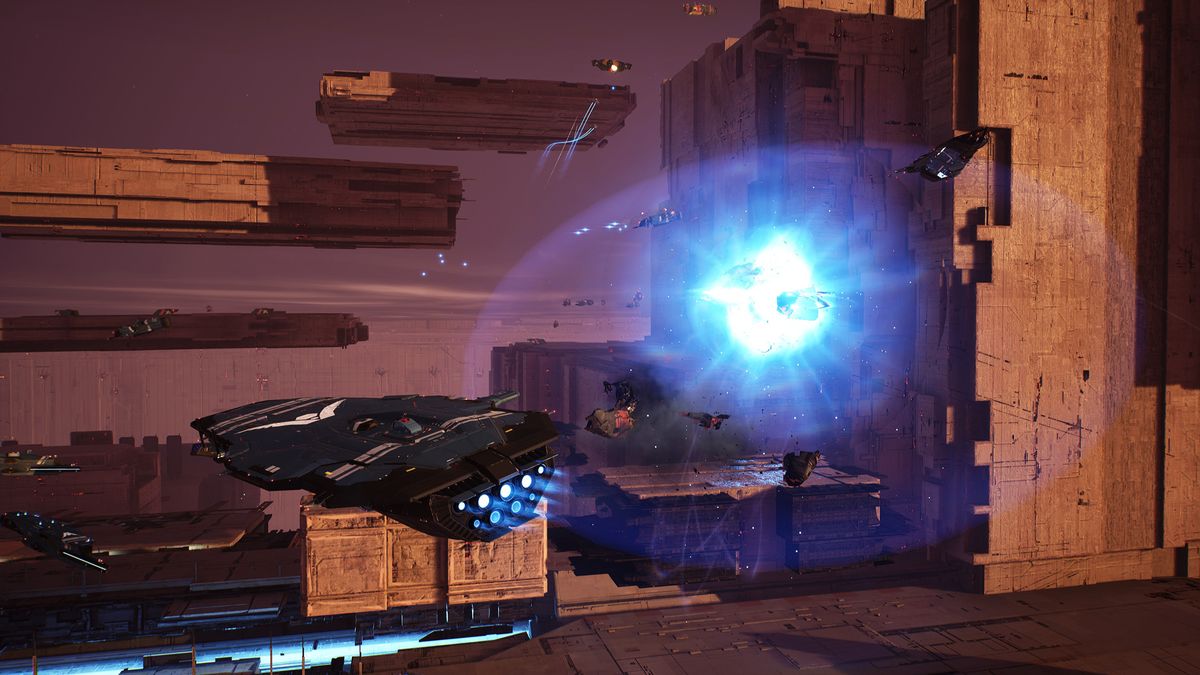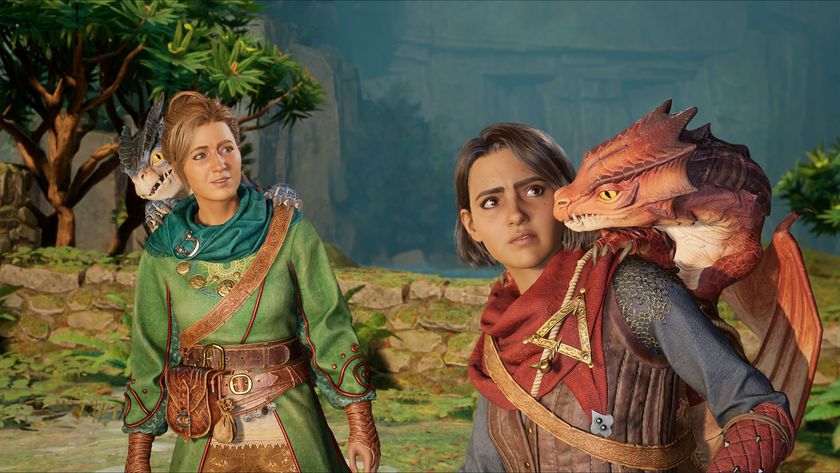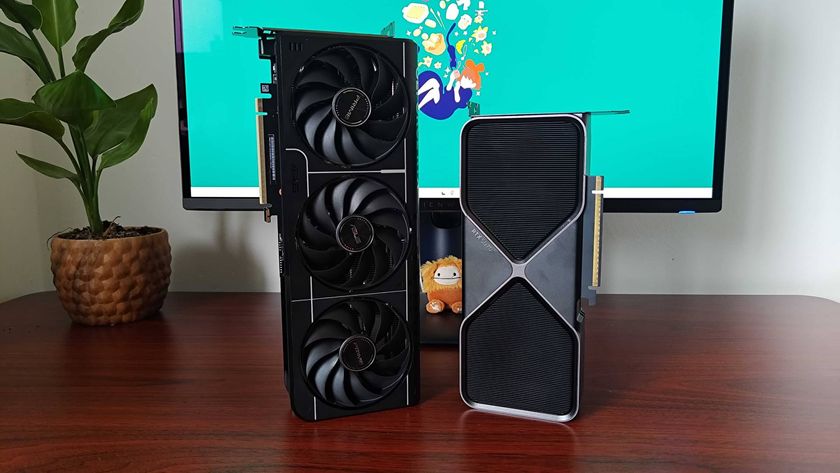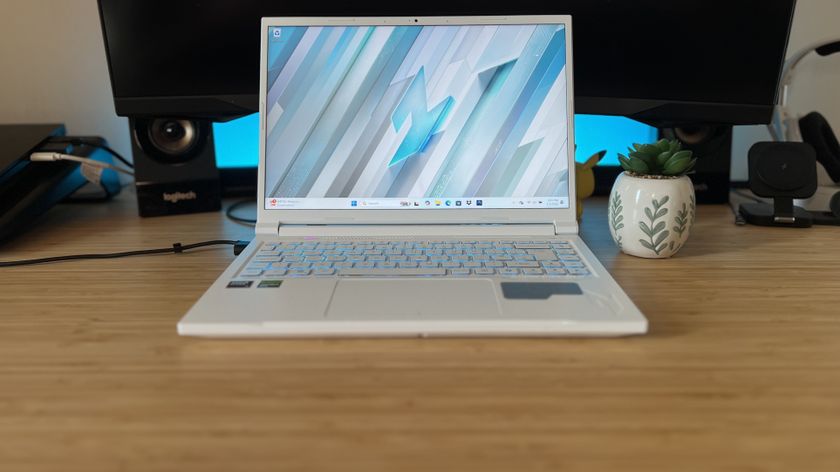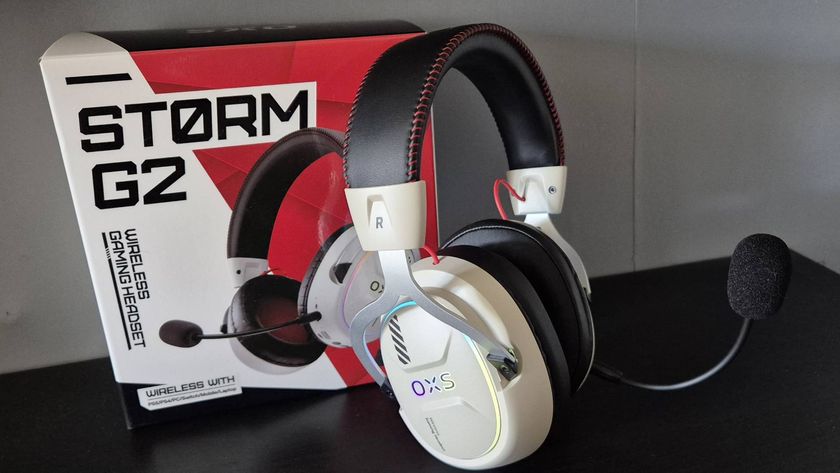12DOVE Verdict
Homeworld's operatic space combat is as engrossing as ever in its third outing, although a weaker story and a slightly odd cover system dim the shine of its star.
Pros
- +
Spectacular RTS action
- +
Diverse campaign missions
- +
Interesting roguelike mode
Cons
- -
Disappointing story
- -
'Space terrain' concept a mixed blessing
- -
A lot of bugs
Why you can trust 12DOVE
Homeworld may have launched RTS gaming into 3D space, but even amid the infinite void, it still found a wall to put your back against. Relic's 1999 classic was a near-perfect blend of spectacle and stress, lending you control of astonishing firepower while constantly making you feel like you were one wrong move away from annihilation.
25 years on, Homeworld 3 can muster that same mixture of awe and anxiety, but it's a little less consistent in its execution. When all engines are firing, Blackbird Interactive's sequel is astonishing to behold, while its campaign can be every bit as imaginative and intense as Relic's original work. But the missions take a while to warm up, and they do so at the exact moment the story starts to go cold. Meanwhile, Homeworld 3's big idea, to make that metaphorical wall you're up against a literal one, is only intermittently successful.
Fleet on the ground
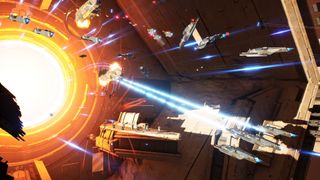
The core of Homeworld 3 is the same as it ever was, its balletic, elegiac space battles emanating from the mobile hub of your Mothership. This bladelike vessel is both the HQ you must protect and the factory floor of your war machine. From here, you build dozens of smaller spaceships that range from single-person fighters to kilometer-long battlecruisers, and direct them to fight enemy fleets across tightly crafted missions.
In previous games, these battles took place in (mostly) empty space. But in Homeworld 3, space has terrain now. Every mission or match takes place around vast megastructures and landscapes, such as colossal space derelicts, destroyed hyperspace gateways, and free-floating ice shelfs.
These, uh, space-scapes provide a dramatic backdrop to the action. But they play a direct role in the game too. At a basic level, the presence of terrain makes moving your fleet around slightly easier. Instead of having to precisely input the 3D coordinates of a move order using Homeworld's patented movement disc, you can now often just right click on a bit of terrain like you would in a standard RTS (though the movement disc remains for movements across empty space.
But terrain has more specific uses too. Free-floating chunks of debris, for example, can be used as cover by smaller crafts, helping shield them from the projectiles of more powerful ships, each of which has a physical presence in the game world. Many maps are also riven with tunnels and gullies you can use to bypass enemy defenses, and possibly get the drop on them with an ambush.
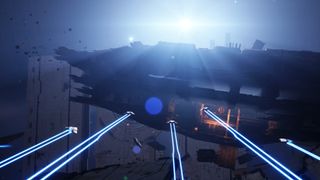
It's a great idea in theory. But it's more incidental in practice. Opportunities to use cover and tunnels are relatively scarce. In the campaign, you might take advantage of them occasionally during the early parts of a mission, but the larger your fleet becomes (both in number and ship-size) the less practical cover becomes. It doesn't help that, compared to other RTS' that feature cover – like Company of Heroes – the benefits it provides in Homeworld 3 are not immediately obvious. The game tells you that units in a neutral stance will "try to use cover as much as possible", but this doesn't help you interpret when cover is being effective and when it isn't. It lacks the clarity of CoH's "soldiers placed behind this big stone wall will be protected from gunfire unless flanked or blown to smithereens".
The biggest problem with these megastructures, however, is they make your units seem smaller than in previous Homeworld games. Representing scale has historically been an issue for the series – your interceptors have always looked a bit like flies swarming around a cow's backside during battle.
But your Mothership at least seemed massive, helping you understand how "big" other ships were. Now, though, even your Mothership frequently appears tiny compared to the massive structures that constantly surround you. To properly sell the fantasy, Homeworld 3 needs levels which properly reflect the scale of the ships versus the vastness of the world.
Ion the prize
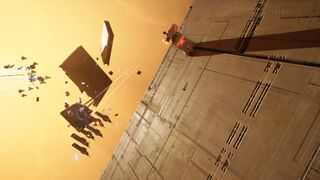
Fortunately, the fundamentals of Homeworld are as robust as ever. Its rock, paper, scissors unit combat remains both intuitive and satisfying, further bolstered by the fact that units have deployable abilities that can give you an extra edge in combat. Ion Cannon frigates, for example, can "Overcharge" their lasers for a huge damage boost at the cost of a longer recharge, while battlecruisers can disable their own weaponry to give all nearby ships a boost to damage, making them useful hubs to build fleet around. The addition of stationary turrets, which stick themselves to a surface also helps to bring the new terrain into play, letting you set up fixed defenses to free up ships for aggressive maneuvers, or establish progressively higher backlines to gradually push your opponent back.
Turrets can be extremely useful, although deploying them can be a little fiddly. Then again 'a little fiddly' could surmise Homeworld 3 in general. Again, Homeworld's controls have never been the most intuitive, and learning how and when to move ships around is a big part of its reward. Nonetheless, Homeworld 3 makes some unforced errors. It walks back Homeworld 2's innovation to have smaller units grouped into squadrons by default. Hence, if you want different squads of Fleet Bombers or recon fighters, you'll have to assign them to different unit groups every time you build them.
Another annoying element is that selecting a manufacturing unit on the map, like a Carrier or your Mothership, doesn't automatically switch to their build menu. You have to do that separately in the drop-down menu in the top right corner, meaning you can easily end up building all your reinforcements on the completely wrong side of the map.
When everything comes together, though, the rewards can be enormous. Even with the diminished scale, Homeworld 3 can pop off in tremendously satisfying fashion. Skirmishes between the smallest craft are impressive, as your interceptors' gatling guns spit glowing streams of projectiles at their foes. But this pales in comparison to a squad of Ion Cannon Frigates firing white hot beams of death across several kilometers of space, or a group of Destroyers launching a constellation of torpedoes into the side of a battlecruiser until it bursts in an ice-blue explosion. Homeworld 3 sounds incredible too, from the naturalistic radio chatter that suddenly cuts off when the ship in question puffs out of existence, to Paul Ruskay's magnificently eerie score, which lives up every bit to his earlier work in the series.
Campaign supernova
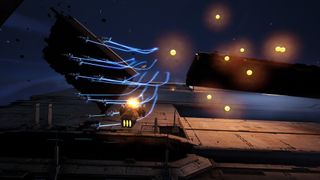
Visually and audibly, Homeworld 3 is a space game with vision. The same can't quite be said for its narrative, despite showing some early promise. Set 20 years after the events of Homeworld 2, the campaign's story centers around Imogen S'jet, descendent and disciple of the original games' protagonist Karan S'jet. Karan and her ship – the Khar-Sajuuk has been missing for most of this time, having departed to investigate an anomaly at the edge of space. When that anomaly starts causing massive destruction across several remote worlds, Imogen is tasked with following in Karan's footsteps, and discovering the truth behind this bizarre interstellar enigma.
The first half of the story is enjoyable, mysterious, and convincingly written. It starts with the traditional mission of putting your new Mothership through its paces, with coolly uttered technical jargon flowing between your subordinates as you boot up the ship's various systems. When all's ship-shape, you then inch your way toward Karan's last known location, contending with raiders, sabotage, and asteroid fields as you do so.
Unfortunately, the story's latter half is spoiled by the introduction of a villain who doesn't so much chew the scenery as swallow it whole, and it really pulls you out of the somber, sincere atmosphere Homeworld 3 has slowly built up to this point. After this, the story becomes a very lackluster affair, and several enjoyable callbacks to the previous games in the series aren't enough to redeem it.
Yet while Homeworld 3's story may stumble, the individual mission scenarios are more consistently compelling. Highlights include a vertical assault on a massive fortified shipyard, a spectacular siege defense where you hold off an army of vessels spilling out of an interstellar gate, and a 'stealth' mission where you need to sneak the Mothership through an icy ravine while using smaller ships to take out overhead patrols.
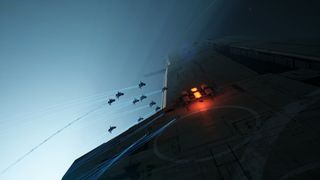
The campaign is generally adept at twisting Homeworld's mechanics in interesting ways, and stretching your capacity to use the resources at your disposal. It is a slightly shorter campaign than previous Homeworld games, with a difficulty level leaning a little too heavily toward the easy side. But the final two Homeworld 3 missions are both significantly longer and harder than those that come before them, with both seriously challenging your logistics as you take on scores of enemies on multiple fronts.
Sadly, these missions were also the buggiest I played. I encountered a handful of issues in the broader campaign, mostly revolving around how the game continues to play out even during cutscenes. But Homeworld 3 saved its worst bugs for last. The penultimate mission randomly spawned two enemies in an inaccessible area of the map just after it gave me an objective to clear all remaining enemies, which I only completed because those enemies spent fifteen minutes scudding across the map to fight me. The final mission was beset by an array of problems, ranging from the blue radial splashes of the sensor screen obscuring the battlefield in standard visual mode, to units just not allowing me to select them.
It's also worth noting that Homeworld 3 is pretty performance intensive, and while my experience was mostly smooth, some larger battles in the game's latter half slowed my game to a crawl.
Be my wingman
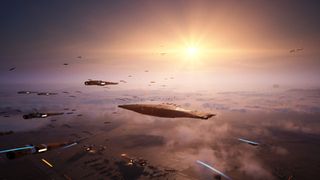
Outside of the campaign, Homeworld 3 features the usual offering of multiplayer and skirmish modes, which let you battle against one or several opponents on maps of varying size. But it also adds a brand new mode called 'War Games', which aims to turn Homeworld into a rogue-like. After picking a specific fleet type, War Games launches you into a succession of increasingly difficult maps, which push you to complete rapid-fire objectives while also collecting "artifacts", each of which lets you pick from three potential upgrades to your ships. Each War Game culminates in a battle against a capital ship, with rewards from your run letting you purchase more powerful fleet-types.
Essentially, it's a randomly generated mini-campaign that can be completed in around an hour. It's a fun complement to the main campaign, with its fast pace doubling down on the frantic plate-spinning of the main campaign. Yet while War Games can be played solo, it feels geared toward cooperative play, as with one player you lose much of the scale associated with Homeworld's space battles. It's still good for a quick blast of Homeworld action, but if you want a full-fat Homeworld 3 battle without the aid of friends, you're better off with the more traditional skirmish or multiplayer.
Homeworld 3 doesn't represent a major step forward for the series, but it does bring the series safely into the modern era. Its campaign could be bigger, its story better, its controls a little more refined. But most of what it does it does well, and when its combat engine really cranks the handle it is utterly sublime. I'd love to see Blackbird do more with the series, take the fundamentals they've rebuilt here and truly push the boundaries of the series. But if this proves to be Homeworld's final foray into the final frontier, then it goes out with more of a bang than a whimper.
Disclaimer
Homeworld 3 was reviewed on PC, with code provided by the publisher.
Rick is the Games Editor on Custom PC. He is also a freelance games journalist whose words have appeared on Eurogamer, PC Gamer, The Guardian, RPS, Kotaku, Trusted Reviews, PC Gamer, GamesRadar, Rock, Paper, Shotgun, and more.
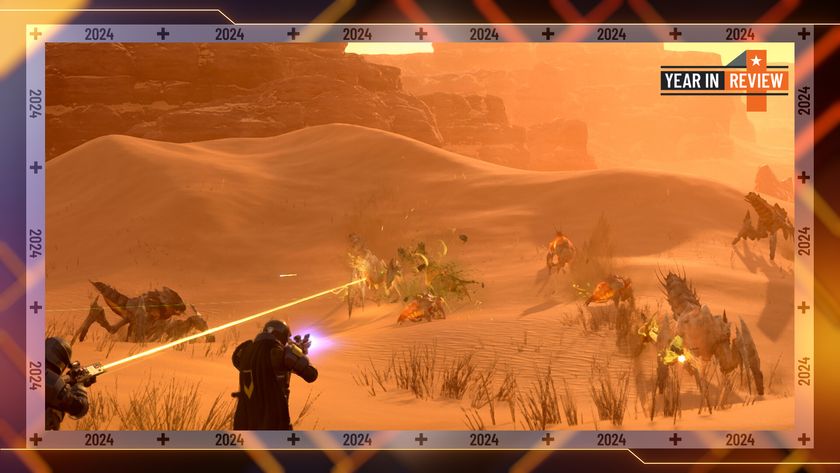
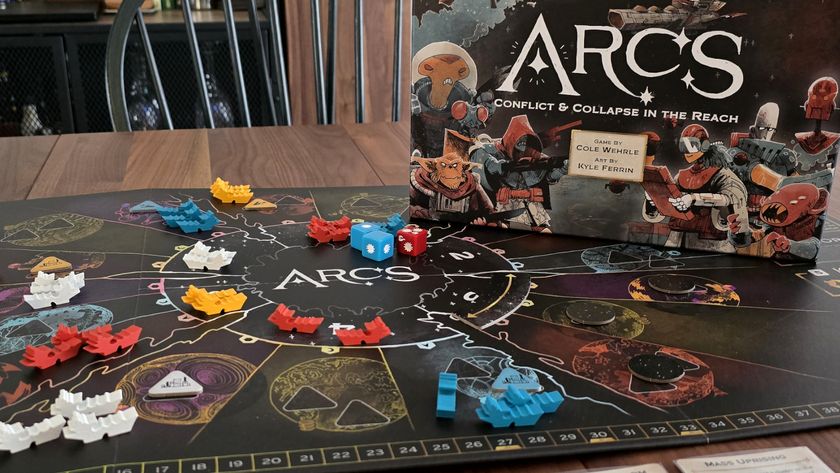
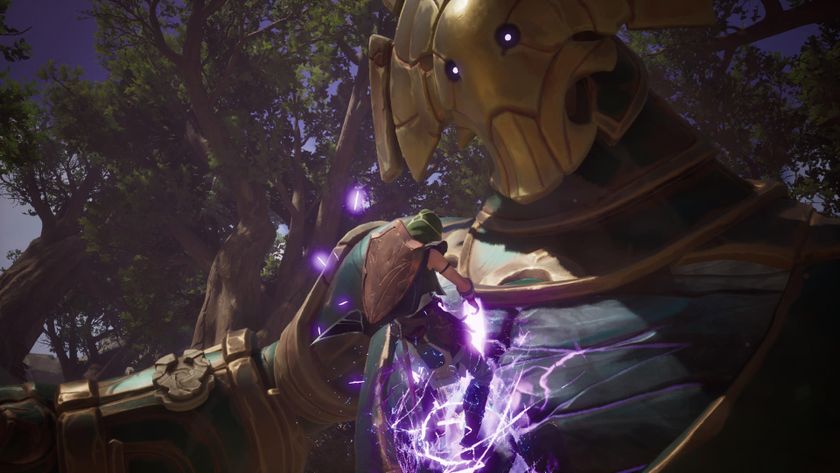
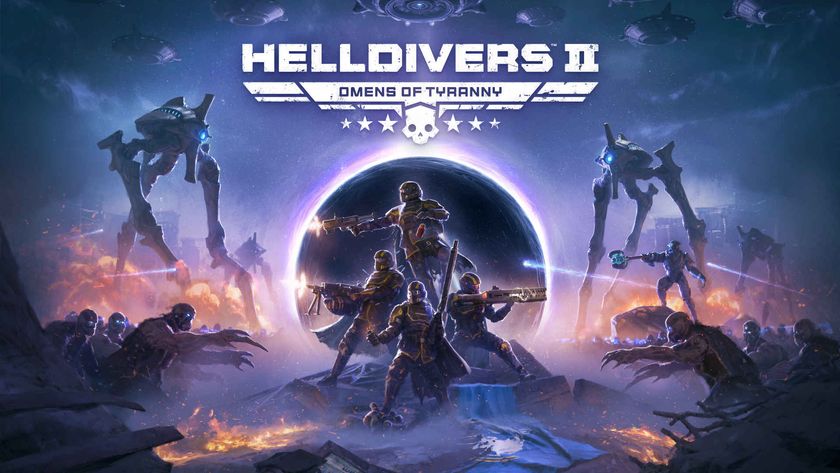

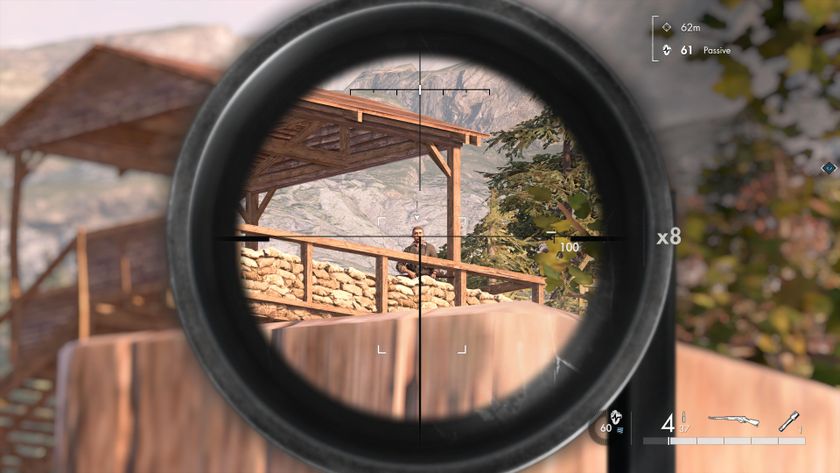
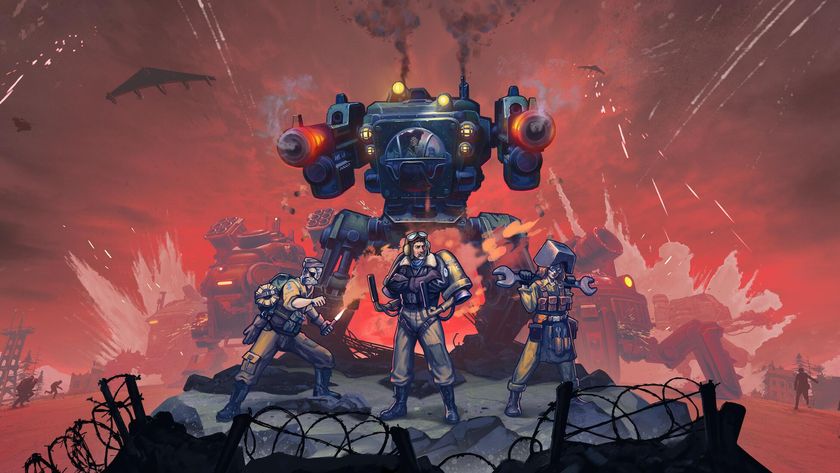

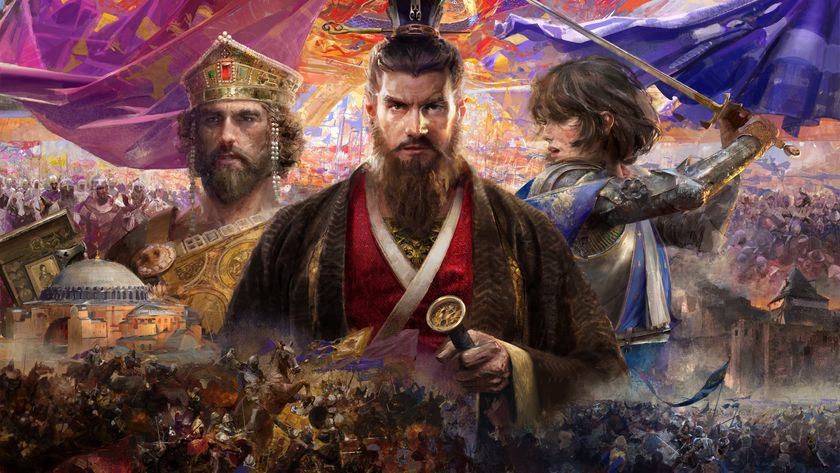
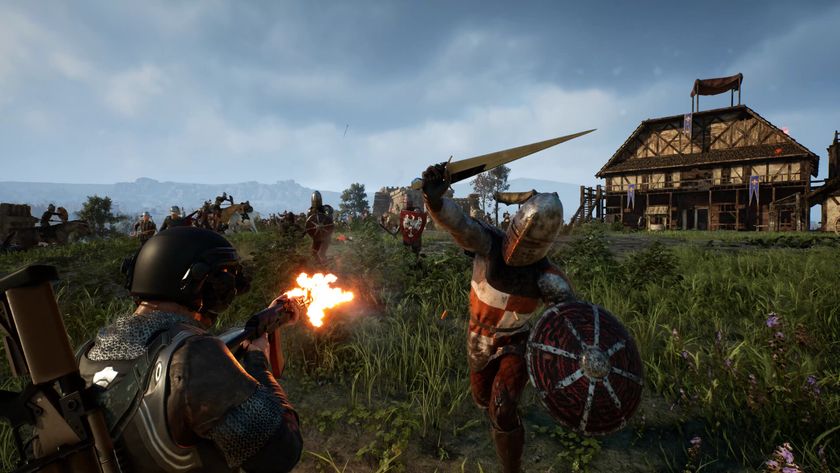



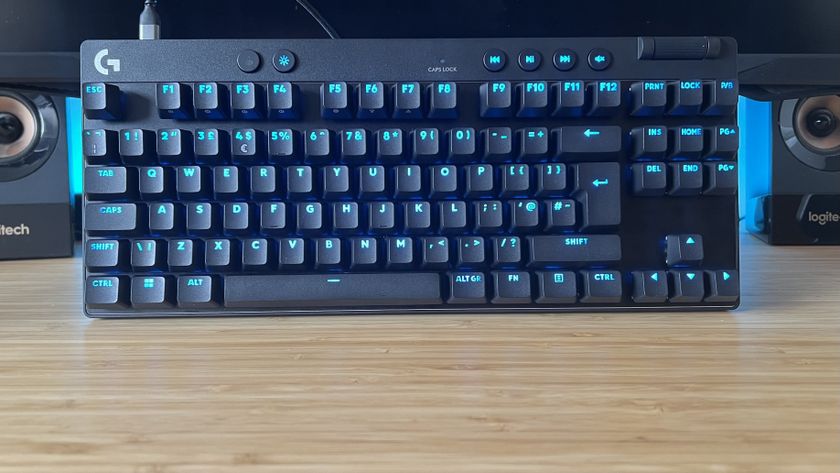
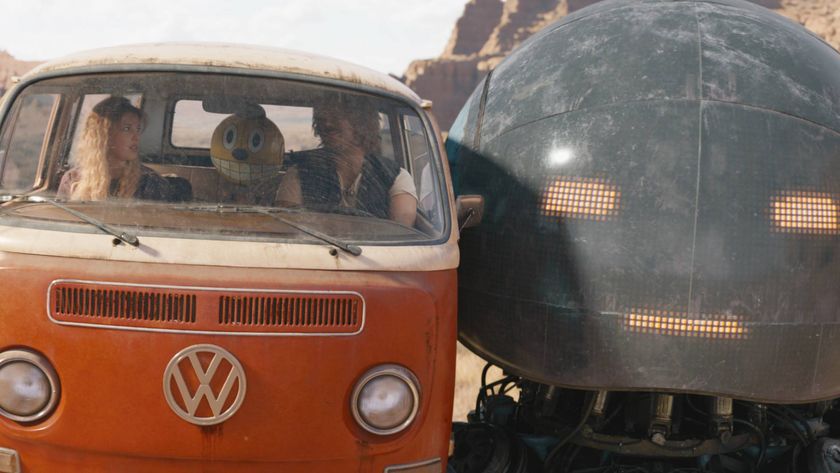
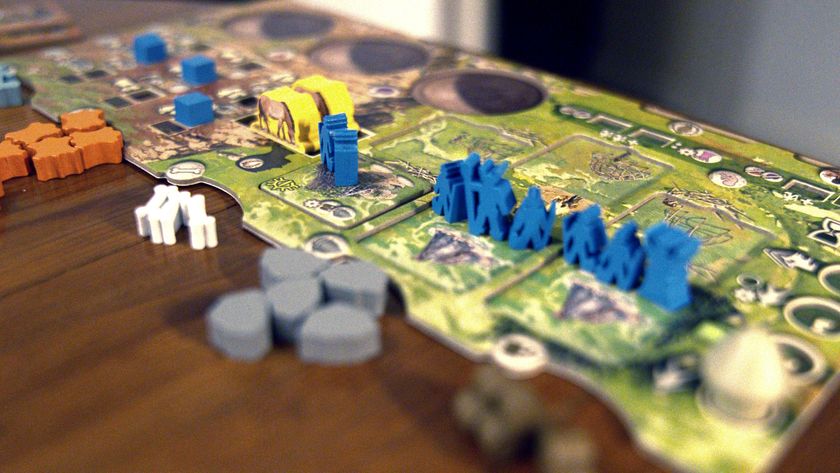
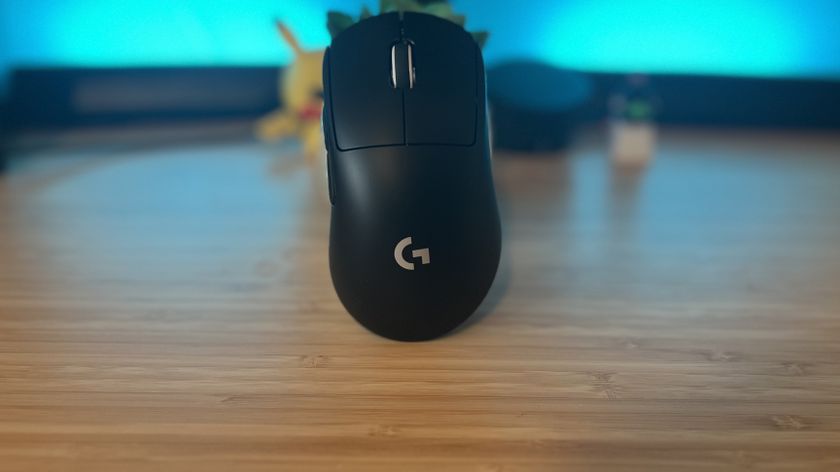
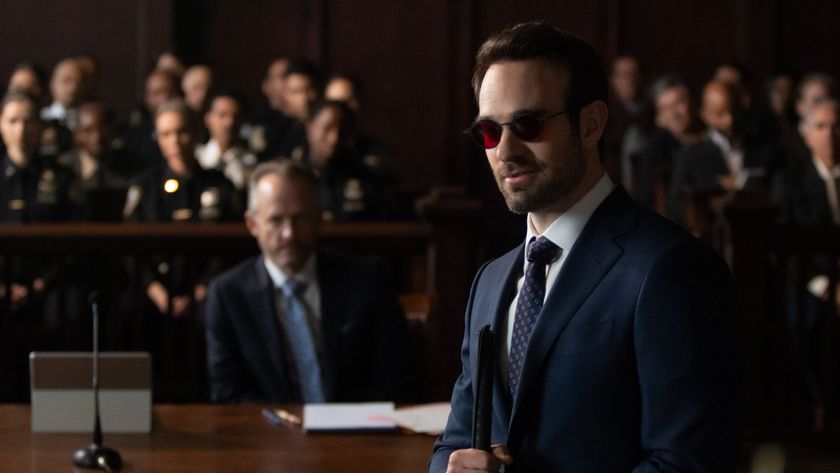

Marvel fans are discussing which of the Netflix series characters would have survived the Blip
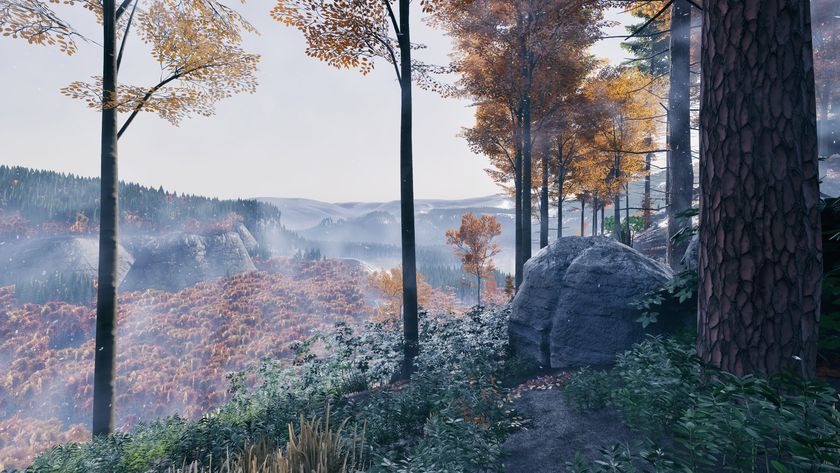
PUBG creator's wilderness survival game actually draws inspiration from an unexpected place - a whole raft of zombie games like DayZ, Project Zomboid, and Left 4 Dead
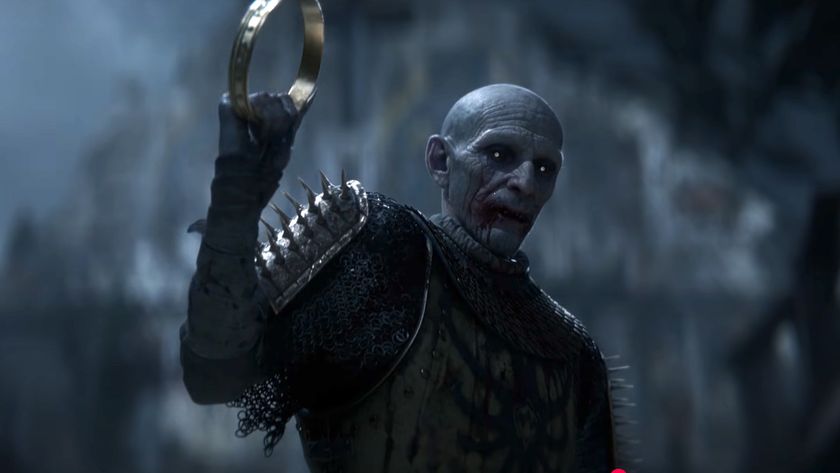
The Witcher 3 devs created a Jekyll & Hyde-style character for their new vampire RPG "because nobody yet has done that"
